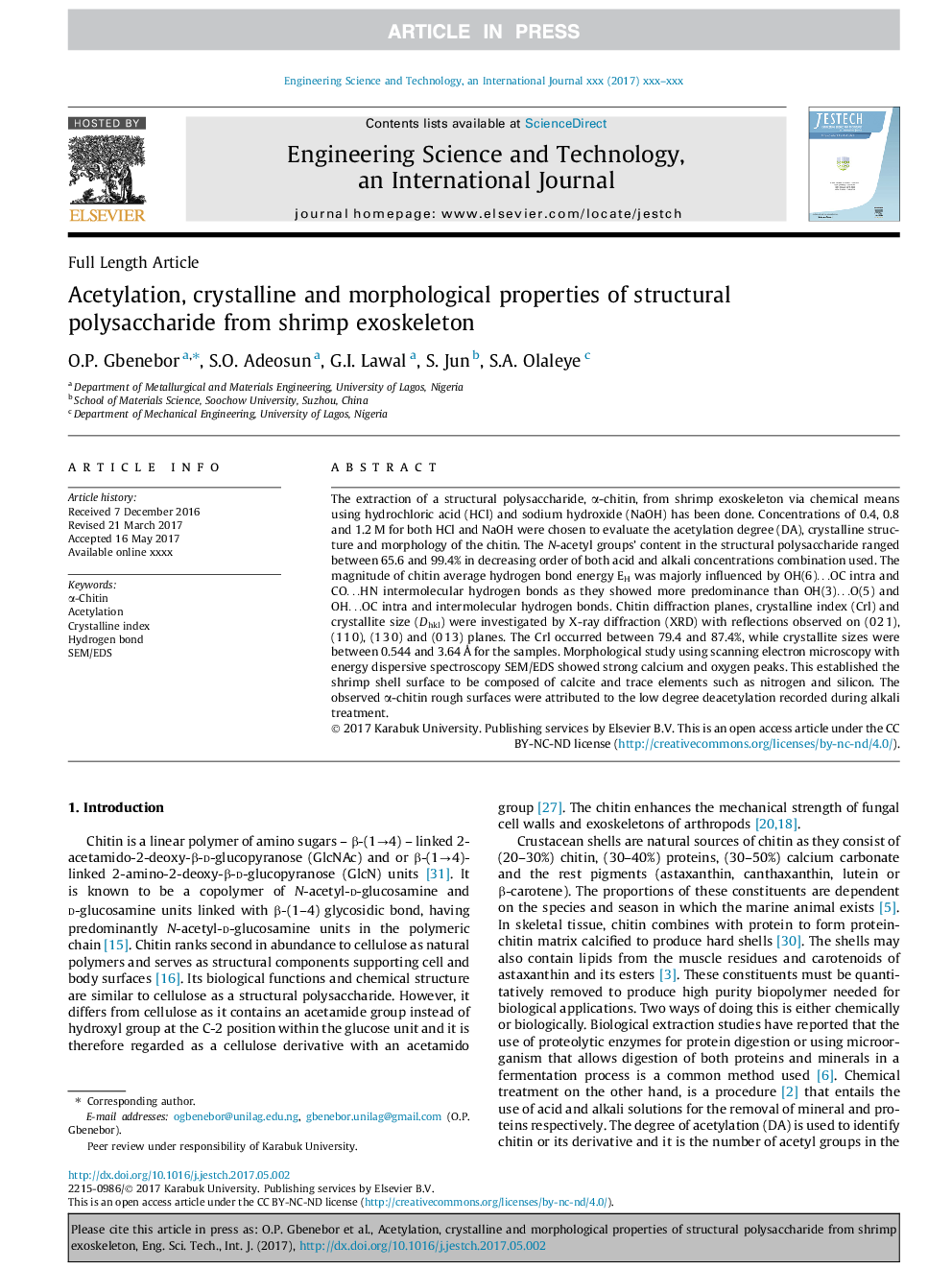| Article ID | Journal | Published Year | Pages | File Type |
|---|---|---|---|---|
| 6893893 | Engineering Science and Technology, an International Journal | 2017 | 11 Pages |
Abstract
The extraction of a structural polysaccharide, α-chitin, from shrimp exoskeleton via chemical means using hydrochloric acid (HCl) and sodium hydroxide (NaOH) has been done. Concentrations of 0.4, 0.8 and 1.2 M for both HCl and NaOH were chosen to evaluate the acetylation degree (DA), crystalline structure and morphology of the chitin. The N-acetyl groups' content in the structural polysaccharide ranged between 65.6 and 99.4% in decreasing order of both acid and alkali concentrations combination used. The magnitude of chitin average hydrogen bond energy EH was majorly influenced by OH(6)â¦OC intra and COâ¦HN intermolecular hydrogen bonds as they showed more predominance than OH(3)â¦O(5) and OHâ¦OC intra and intermolecular hydrogen bonds. Chitin diffraction planes, crystalline index (Crl) and crystallite size (Dhkl) were investigated by X-ray diffraction (XRD) with reflections observed on (0 2 1), (1 1 0), (1 3 0) and (0 1 3) planes. The Crl occurred between 79.4 and 87.4%, while crystallite sizes were between 0.544 and 3.64 Ã
for the samples. Morphological study using scanning electron microscopy with energy dispersive spectroscopy SEM/EDS showed strong calcium and oxygen peaks. This established the shrimp shell surface to be composed of calcite and trace elements such as nitrogen and silicon. The observed α-chitin rough surfaces were attributed to the low degree deacetylation recorded during alkali treatment.
Related Topics
Physical Sciences and Engineering
Computer Science
Computer Science (General)
Authors
O.P. Gbenebor, S.O. Adeosun, G.I. Lawal, S. Jun, S.A. Olaleye,
